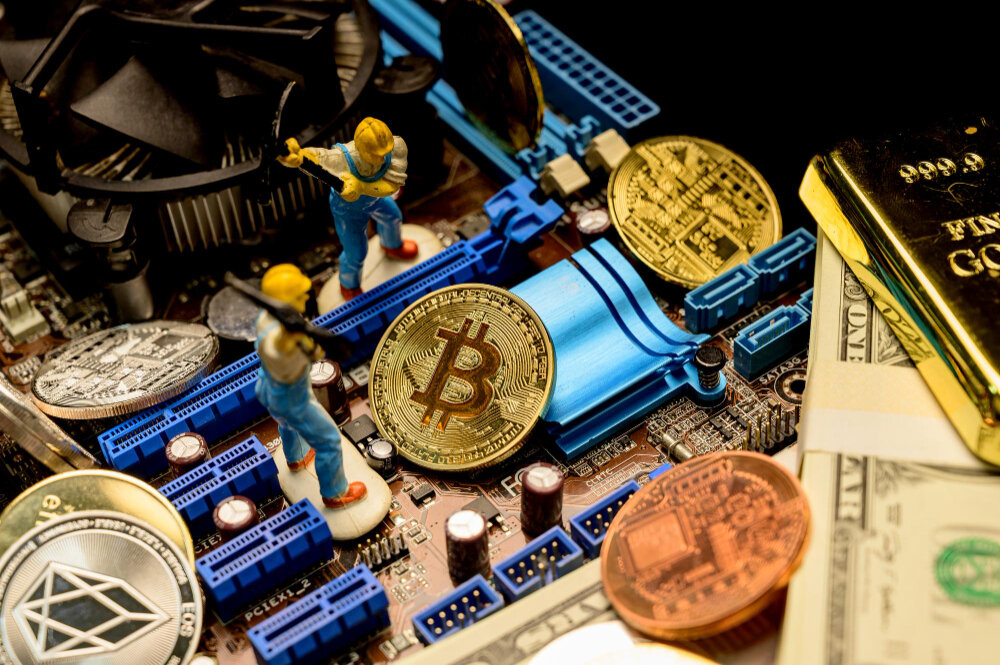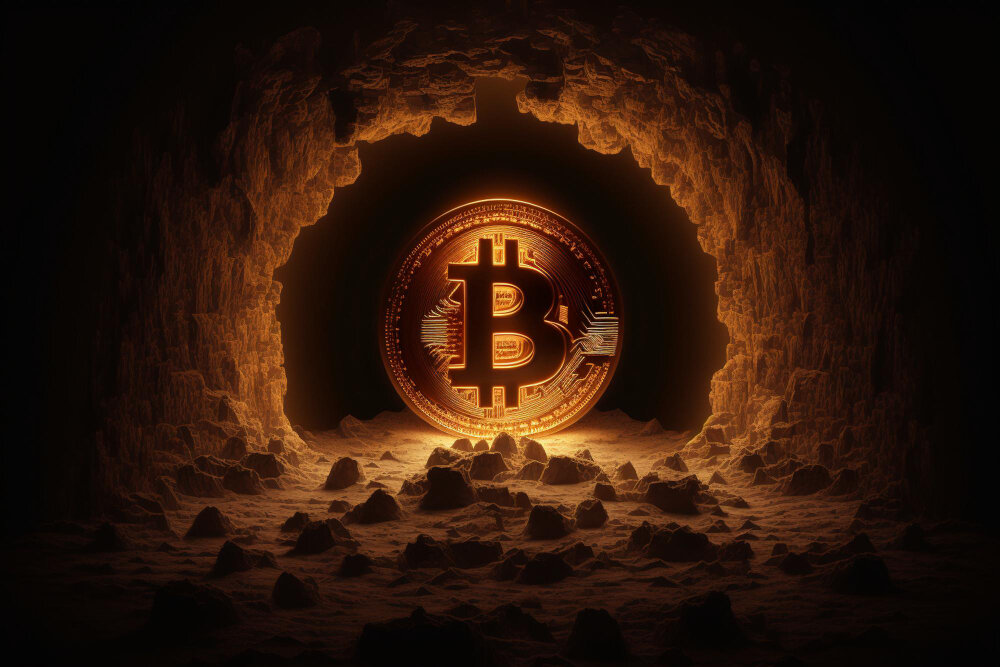Cryptocurrency mining is a fundamental aspect of the cryptocurrency ecosystem as it plays a crucial role in validating transactions, securing blockchain networks, and earning crypto for miners. Whether you are a beginner looking to earn more crypto or have some intermediate-level knowledge in crypto mechanisms, understanding crypto mining basics is essential to navigating this fascinating crypto world.
In this comprehensive guide, we will explore the fundamentals of crypto mining, breaking down complex concepts into digestible explanations. By the end, you'll have a solid understanding of crypto mining, how it works, popular crypto you can mine, and other essential things you need to know.
What is Crypto Mining?
Crypto mining, short for cryptocurrency mining, is a process associated with two primary functions: creating new cryptocurrency tokens and verifying and adding crypto transactions to a blockchain. It is the backbone of decentralized digital currencies, ensuring their integrity and security.
Every crypto transaction must be validated to ensure its legitimacy and prevent double-spending. Miners play a crucial role in this process. At its core, mining involves solving complex mathematical puzzles using computational power. So, miners compete with each other to solve the mathematical puzzles, and the first miner to successfully solve the puzzle adds the verified transaction to the Blockchain. The winner gets a certain amount of cryptocurrency as a reward for their efforts.
The Blockchain, a distributed ledger that records all transactions, relies on mining to maintain consensus across the network. Mining adds new blocks to the chain, creating an immutable and transparent record of all transactions. This decentralized approach makes cryptocurrencies resistant to censorship and tampering.
Let's consider Bitcoin mining, for instance. The miner who successfully solves the puzzle during BTC mining gets to add a new block of transactions to the Bitcoin blockchain and earns newly minted Bitcoins. The incentive helps to motivate miners to contribute their computational resources to the network.
If you're a crypto miner, Plasbit provides a fully secure crypto wallet to keep your earned crypto safe and out of the reach of potential scammers. Our Plasbit wallet lets you manage a variety of cryptocurrencies, including BTC, ETH, and LTC. With the wallet, you can easily convert crypto to fiat or fund your virtual crypto to enable you to shop and spend your crypto online.
As crypto becomes more popular and acceptable, crypto mining becomes more competitive and resource-intensive. So, to be a successful miner, you need to invest in specialized hardware, such as Application-Specific Integrated Circuits (ASICs) or powerful Graphics Processing Units (GPUs), to maximize their mining capabilities and stay competitive.
How Does Crypto Mining Work?
Crypto mining functions on the concept of consensus algorithms - a computational process that allows the nodes of a blockchain network to reach a shared agreement on the state of a distributed ledger. The most common consensus algorithm in the blockchain ecosystem is the Proof of Work (PoW) used in Bitcoin mining.
To help you understand how mining works, let's break down the process into the following steps:
1. Transaction Verification
When a network receives the notice of a newly initiated transaction, miners verify that it is authentic by attesting that the transaction adheres to the rules of the crypto protocols. They also check if the sender has enough funds for the transaction.
2. Creating a Block
After verification, miners combine a transaction with other verified transactions to form a block in the Blockchain. They also assign a "hash" to the block as its unique identifier and digital fingerprint. To ensure that the chain of blocks follows an ordered sequence, miners attach a reference to the previous block's hash. This sequential chain of blocks is known as a "blockchain."
3. Solving the Puzzle
Miners compete to solve a complex mathematical puzzle associated with the block. This process requires significant computational power and repeatedly hashing the block's data with different inputs until they find a solution. The puzzle is designed to be computationally expensive but easy to verify once solved.
4. Adding the Block to the Blockchain
Once a miner finds the solution to the puzzle, they broadcast it to the network. Other miners quickly validate the solution, ensuring the block's hash meets specific criteria, such as having a certain number of leading zeros. Once validated, the new block is added to the Blockchain and the miner gets rewarded with a predetermined amount of cryptocurrency.
This process repeats continuously, with new transactions verified and added to the Blockchain through mining. It is important to note that mining difficulty adjusts dynamically based on the computational power contributed to the network. This ensures that new blocks are added to the Blockchain consistently, maintaining the integrity and security of the cryptocurrency network.
Top 5 Popular Cryptocurrencies for Mining
Beyond Bitcoin, there are other cryptocurrencies you can earn with crypto mining. Let's explore some of the popular cryptocurrencies that you can mine and their unique features:
1. Bitcoin (BTC)
Undoubtedly the king of cryptocurrencies, Bitcoin is arguably the most valuable and widely recognized digital currency. Over 19 million Bitcoins have been mined, with a market cap of $484.7 million.
Bitcoin mining operates on a Proof of Work (PoW) algorithm called SHA-256, requiring powerful ASIC (Application-Specific Integrated Circuit) miners. Mining Bitcoin has evolved from home-based operations to large-scale mining farms, contributing to the growth of the global mining industry.
If you're a BTC miner, ensure you're storing your BTC in a secure wallet to keep it safe. At Plasbit, we provide a multi-functional wallet that helps you conveniently store, manage, and spend your crypto. And with the full Plasbit wallet, you can convert your crypto to fiat currencies and instantly transfer money anywhere at any time.
2. Ethereum (ETH)
Ethereum is the second-largest cryptocurrency by market capitalization - $197 billion as of June 2023 - and significantly impacts the crypto mining landscape. Although Ethereum is transitioning to a Proof of Stake (PoS) consensus mechanism considered more energy-efficient, it currently relies on a PoW algorithm called Ethash.
The Ethash algorithm favors GPU (Graphics Processing Unit) miners, empowering individual miners to participate in the network. Ethereum mining has grown tremendously, with about 120 million Ethereum coins mined to date.
3. Litecoin (LTC)
Considered "the silver to Bitcoin's gold," Litecoin is a popular cryptocurrency for mining. Its Scrypt mining algorithm is memory-intensive, making it more accessible to CPU (Central Processing Unit) and GPU miners. With over 66 million Litecoins mined so far, Litecoin offers a faster block generation time and a different hashing algorithm than Bitcoin, attracting a dedicated community of miners.
Litecoin is one of the cryptocurrencies supported by the Plasbit wallet, where you can securely store, manage, and shop with your crypto worldwide.
4. Monero (XMR)
With its focus on privacy and untraceability, Monero has become a sought-after crypto for people who prioritize anonymity. Monero uses the CryptoNight algorithm, optimized for CPU and GPU mining. It aims to maintain a fair distribution of mining rewards by actively discouraging ASIC mining. There are over 19 million Monero coins to date, with the market cap at $2 billion and its price at $132.6 as of June 2023.
5. Ravencoin (RVN)
Ravencoin is a relatively new cryptocurrency that aims to facilitate asset transfers on the Blockchain. It employs the X16R algorithm, a unique combination of sixteen algorithms designed to resist ASIC mining and promote broader participation. Since its launch in 2018, Ravencoin has gained attention in the mining community, with over 10 billion Ravencoin coins mined so far.
These popular cryptocurrencies represent just a fraction of the diverse mining opportunities available in the crypto space. As the mining industry evolves, you can explore new cryptocurrencies with unique features and mining algorithms as they emerge. Remember to always secure your crypto with the Plasbit encrypted wallet, where you can easily access and manage your assets.

Crypto Mining Hardware and Software
Crypto mining requires specialized hardware and software to mine cryptocurrencies effectively. Let's explore the different types of mining hardware and software commonly used in the mining process:
Mining Hardware:
● ASIC Miners
Application-Specific Integrated Circuit (ASIC) miners are designed for efficient cryptocurrency mining. These devices are highly optimized for a particular mining algorithm, offering significant computational power and energy efficiency.
For example, Bitcoin mining primarily relies on ASIC miners, which have evolved from general-purpose CPUs and GPUs to powerful, dedicated mining machines. ASIC miners play a crucial role in the growth of the mining industry, contributing to the rapid expansion of blockchain networks.
● GPU Miners
Graphics Processing Units (GPUs) are versatile and powerful processors initially designed for graphics-intensive tasks. However, GPUs have become famous for cryptocurrency mining due to their parallel processing capabilities.
GPU miners are commonly used for Ethereum and other cryptocurrencies resistant to ASIC mining. Miners often build custom GPU mining rigs, harnessing the combined computational power of multiple GPUs to increase mining efficiency.
● CPU Miners
Central Processing Units (CPUs) are the general-purpose processors in everyday computers. They are less efficient than ASIC or GPU miners, but you can still use CPU miners for less resource-intensive cryptocurrencies. If you want to start mining with readily available resources without investing in specialized hardware, then CPU mining is your best option.
Mining Software
● Mining Pools
Sometimes, miners collaborate to combine their computing resources to improve their chances of mining a block successfully. Such a group of miners is known as a mining pool, and members of a mining pool share the rewards of successful mining.
Joining a mining pool allows you to earn more consistent and predictable rewards as a miner, especially if you have limited resources. Famous examples of mining pools are Ethermine, Slush Pool, and F2Pool.
● Mining Software Clients
If you belong to a mining pool or mine with a crypto network, you need a mining software client to enable you to connect your hardware to the pool or network. Some of the features and functionalities of a mining software client include managing payouts, configuration settings, and monitoring progress. Some examples of such software clients for crypto mining include BFGMiner, Claymore's Dual Miner, and CGMiner.
● Mining Operating Systems
Mining tools use specialized mining operating systems to optimize mining operations and efficiently manage mining hardware. Mining OS features predefined configurations to support regular mining software and provides a streamlined user interface. Such mining OS includes Hive OS, EthOS, and SimpleMining OS.
Some common factors that influence the choice of mining hardware and software include but are not limited to the following:
● The cryptocurrency being mined
● The miner's budget
● The mining algorithm
● The mining environment's electricity costs.
Environmental Impact of Crypto Mining
Carbon emissions and general sustainability are why crypto mining has recently been subject to critical scrutiny. The criticism is even more severe for Proof-of-Work based crypto such as Bitcoin due to the energy-intensive nature of the process.
Here are some of the crucial areas for consideration on the subject of the environmental impact of crypto mining.
Energy Consumption
Cryptocurrency mining requires massive computational power to solve complex mathematical puzzles to verify and secure crypto transactions, leading to high energy consumption. According to the Cambridge Centre for Alternative Finance, for instance, the annual energy consumption for BTC is more or less equivalent to that of some small countries.
Fossil Fuel Dependency
Fossil fuels such as natural gas and coal are still the primary sources of generating much of the world's electricity. So, due to greenhouse gas emissions, crypto mining operations that depend on these sources contribute to carbon emissions and unfavorable climate changes.
E-Waste
As the crypto mining industry evolves and advances in technology, more efficient digital models replace older mining hardware. The resultant electronic waste can be harmful to the environment unless they are appropriately managed.
Bottom Line
With its critical roles in generating new coins and securing Bitcoin and other blockchains, crypto mining has become integral in sustaining the crypto ecosystem. However, as explained in this post, you must be aware of the environmental downsides to crypto mining. So, ensure that your mining process is as environmentally friendly as possible.
You can earn crypto as a miner and validate and secure transactions. You can check out the best crypto to invest in today to be sure you're making the right choice. At Plasbit, we provide the safest crypto wallet for securing and managing all your crypto assets in one place. You can easily spend your crypto by funding your Plasbit card for shopping in millions of locations worldwide.







